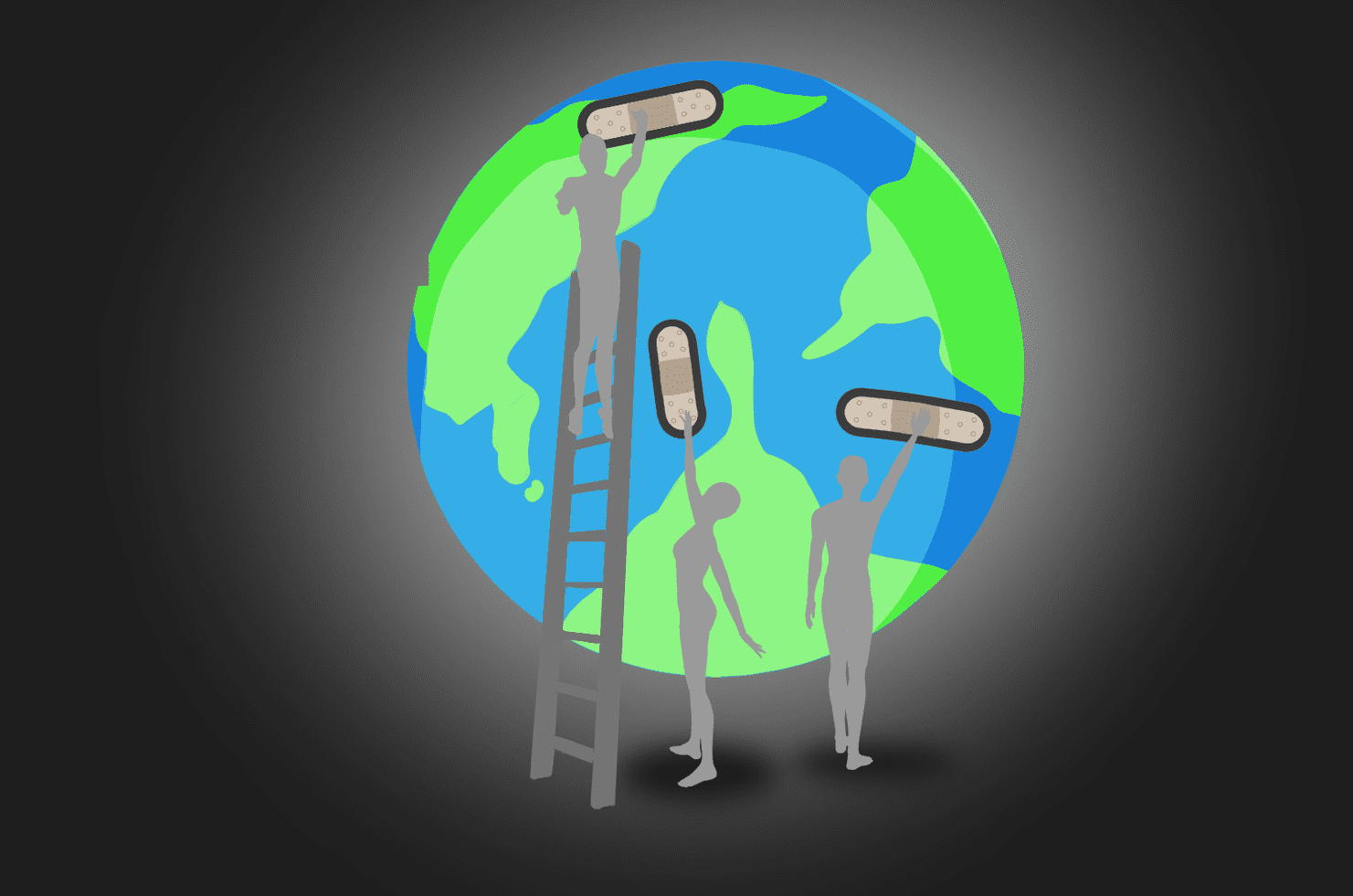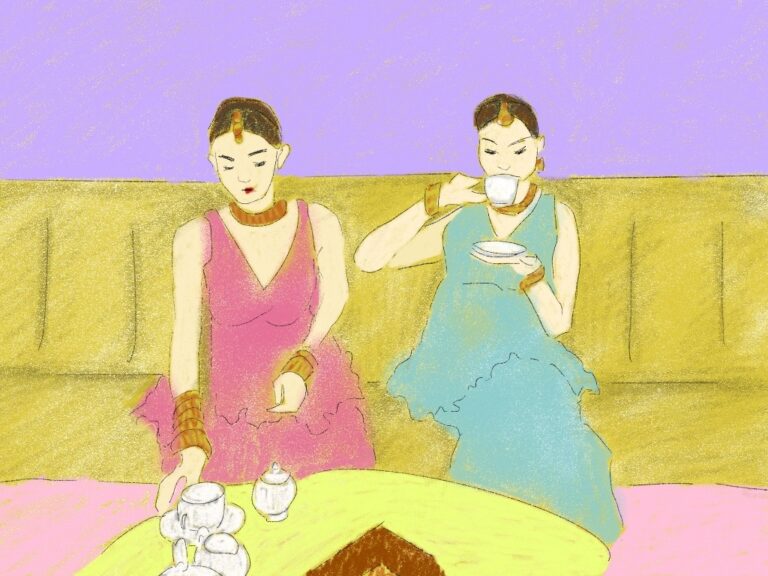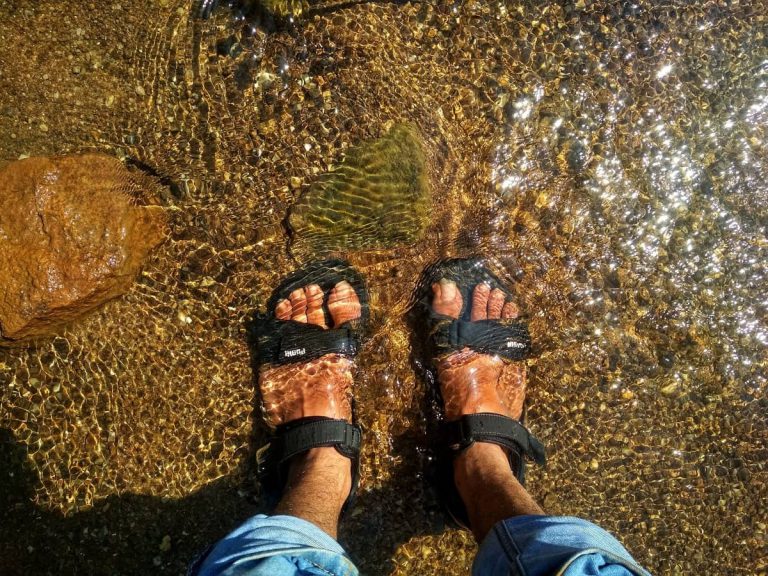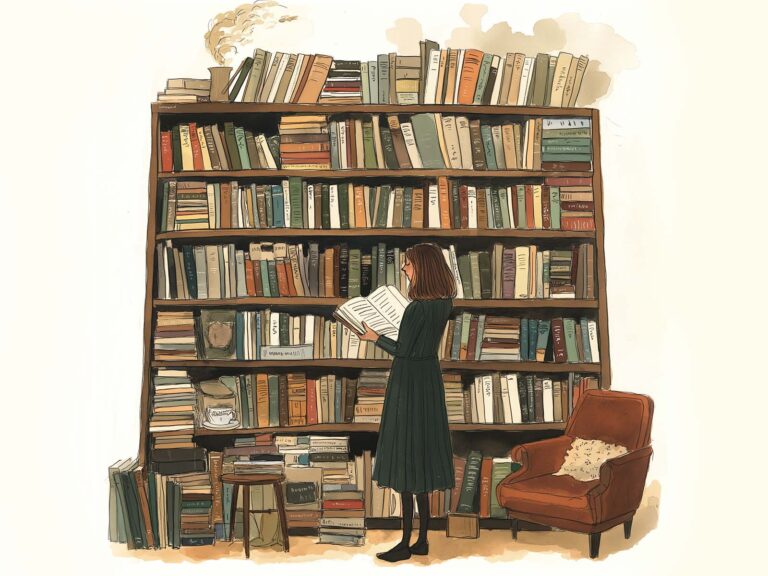Aren’t we all migrants?
Dr. Jayan Philip is a Contributing Writer at The ArmChair Journal. His career as an educator spans over three decades, encompassing roles both in India and abroad. His passion for knowledge dissemination extends beyond traditional teaching to include extensive experience as a quiz master. His two forthcoming books are The Indomitable Gandhi, The Indefatigable Gandhi and Quintessentially Quizzical. He believes that through an understanding of history, individuals can gain valuable insights into both the triumphs and tribulations of the past, thereby enhancing their ability to make informed decisions and cultivate critical thinking skills in the present day.
Migration has always played a crucial role in shaping societies and influencing political landscapes throughout history. The U.S. presidential election saw discussions around migration as intense as ever, if not more. Candidates frequently highlight this issue, recognizing its importance in both domestic and international policy.
The effects of migration are complex, encompassing economic contributions, cultural exchanges, and social challenges. As demographics shift, political allegiances and regional priorities also evolve. Understanding migration in a historical context enriches current debates. From early human migrations dating back to the paleolithic, Mesolithic, and neolithic ages to modern movements driven by conflict and climate change, this phenomenon remains central to the human experience and governance. Nevertheless, domestic politics in many major countries including the US and the UK show less sympathy to this phenomenon.
During my time as a Non-Resident Indian (NRI) in the UAE from 1997 to 2007, I found myself immersed in a sea of migrants. The multicultural environment extended far beyond Dubai’s Global Village; the streets themselves were vibrant tapestries of linguistic diversity and culinary delights. A masala dosa, burger, shawarma, biryani, and falafel were all readily available, reflecting a variety of food preferences and consumption patterns. The key questions for passersby—whether they are migrants, tourists, or nationals—boil down to two: Which dish do I prefer, and how much will it cost? It’s no longer just about accessibility or availability, but rather about affordability.
This dynamic raises important considerations: How do we ensure that diverse culinary options remain accessible to everyone, regardless of their economic status? Are there changes needed in pricing strategies or policies to better serve this multicultural populace? Migrations do foster cultural interactions and fusions which lead to amalgamations directly and indirectly in cuisines, dressing and style and can extend to art and architecture as was evidenced in the Indian sub-continent during the pre and post-Mughal era. The introduction of innovation and use of musical instruments during the Delhi Sultanate years (1206- 1526) like the tabla, sarangi, and sitar and the spread of qawwali left a lasting impact and continue to do so. Though invasions are a brutal form of migration, the consequences and outcomes do merge into the societal patterns and discourses of the day producing a multi cultural understanding and validation.
European Imperialism beginning with the Scramble of Africa unleashed the worst inhuman form of migration camouflaged as colonialism. Weren’t the British migrants in India, the French in Congo and Algeria, the Dutch in Indonesia, Germans in Cameroon and South West Africa? They arrived as migrants fully prepared as colonizers with the greed and lust for power and wealth across Africa and Asia.
The Indian diaspora is particularly prominent in countries like the United States, Canada, the United Arab Emirates, the United Kingdom, and Australia. Many Indians seek opportunities in various sectors, including technology, healthcare, engineering, and hospitality, contributing to both their host countries and India’s economy through remittances. In many Malayali households, evening conversations often revolve around one question: “When will my son or daughter come home for the holidays?” This question is sometimes accompanied by a hidden agenda or a planned lifelong commitment in store and comes with a supplementary question: When do we find him or her a match within the two months of his paid vacation? I was asked this question in 1997 before I left for Dubai by my mother and she found the answer in 1998! She decided and I relented but never regretted it! This is the story of many bachelor NRIs around the world.
It is not just wars alone which include trade-related ones that cause migrations. The Push and Pull factors of migrations are not merely concepts that are taught in Geography lessons but pivotal points of massive economic and social changes which sometimes are affected gradually but do have long-term consequences both positive and negative. It is also interesting to note that most migrants come from the Global South – Mexico, El Salvador, Honduras, Guatemala, Libya, Syria, Sudan, and India (Marshall, 2020). This is a further testament to the fact that the North-South divide is disproportionate in terms of economic progress and stability. The innocent migrant is on the move, crisscrossing or navigating a rough terrain, forced into this journey due to circumstances or developments back home—be it a civil war, religious persecution, indoctrination, or the lack of state support for a genuine means of livelihood. Syria, Sudan, Afghanistan, Myanmar, Rwanda have all seen this through the past decades. Some venture into the seas, hoping that the shores ahead will offer solace or a place of rest in the days to come.” While the migrant becomes a topic of TV debates, the legal mechanisms and judicial systems of the developed world don’t hesitate to ostracise them to far-off islands or squalid migrant camps. This is the travesty of truth and reality of thousands who managed to enter the EU nations, the US, the UK, or Australia.
How fair is this?
It has to be noted that Idi Amin, one of the most brutal dictators of the many from Africa and the Shah of Iran who had to flee from their own countries were given asylum. The Shan initially went to Egypt, then traveled to Morocco, the Bahamas, Mexico, and eventually to the United States for medical treatment. He was finally granted asylum by the then Egyptian President Anwar Sadat. Idi Amin fled to Libya and later lived in Saudi Arabia for the rest of his life (The Editors of Encyclopaedia Britannica, n.d.).
The United States flew the Filipino Ferdinand Macros to Hawaii in the midst of a massive crackdown after rigged elections in 1986. Since 1946, 54 countries have hosted at least one dictator. Among these, USA, UK, France, and Argentina have hosted 5 exiled dictators (Kremer & Escribà-Folch, 2017). How fair were these actions or decisions in accordance with the law or jurisprudence?
According to reports from the United Nations High Commissioner for Refugees (UNHCR), there are approximately 117.3 million internally displaced persons worldwide. It is also ironic that 75 percent of refugees are hosted by low- and middle-income countries.” (UNHCR Global Trends 2023, 13 June 2024)
India has a massive migrant population and each one has his or her story to tell or speak about. The sheer hard work put in by the NRIs despite the racial abuses and step motherly treatment at the hands of the employer is a testament to his or her persistence and determination to seek a better living and a life of dignity back home. The total Indian migrant population outside India is estimated to be around 32 million. In 2023, Indians abroad sent back about $100 billion in remittances, the highest amount received by any country. (Economic Times. October 10, 2023). This massive inflow of remittances was driven by contributions from the Indian diaspora, particularly from countries like the United States, the UK, Singapore, and the Gulf Cooperation Council (GCC) nations which include the UAE, Oman, Qatar, Bahrain, Saudi Arabia and Kuwait.
If migration had been restricted, we would not have seen global figures like Mahatma Gandhi in South Africa, or Barack Obama, Arnold Schwarzenegger, Kamala Harris Sundar Pichai, and Satya Nadella rise to prominence in the United States. Their achievements prove that success is not bound by ethnicity but by determination, resilience, and opportunity. These individuals broke barriers in politics and technology and redefined leadership on a global scale. The 21 years of Gandhi in South Africa played a crucial and critical role in his fight as a crusader but also led to a new dimension of political leadership the world was about to see after he arrived in India in 1915 (Philip 2024).
Beyond politics and business, the same holds true in sports. In cricket, Jofra Archer, born in Barbados, became a crucial player for England in the same way Rachin Ravindra did it for the Kiwis against India in the first test in Bangalore a few days ago and Sikander Raza continues to do for Zimbabwe. In football, Kylian Mbappé, with Cameroonian and Algerian roots, shines for France. In boxing, Amir Khan, of Pakistani descent, achieved remarkable success representing Britain. Eduardo Camavinga, one of France’s youngest goal-scorers, was born in a refugee camp in Congo. His parents moved to France with the then two-year-old Camavinga, who is today on the world stage of football. These athletes have become icons not just because of their talent, but because they grabbed the opportunity to compete on a global stage, regardless of their ethnic background. It is true to hear and acknowledge the saying that ‘Opportunities are not lost, somebody else grabs them”.
Migration allows individuals to realize their potential beyond borders, proving that talent and determination are far more significant than one’s place of birth or ethnicity. The world would have been deprived of many success stories like these if opportunities were confined to national boundaries. The houses which dot the Indian or Asian countryside do stand tall as representations of human ingenuity as the remittances which flowed across the national boundaries facilitated its construction and aided the resident inside who longs to be with the father or the mother but can’t be as a family is the priority over anything else. Migration, in this way, is both a blessing and a burden—enabling the building of houses as homes for many in their motherland but leaving an emotional vacuum that can never quite be filled.
Indian metros Mumbai, Delhi, Kolkata, Chennai, Bangalore, and Hyderabad (which can be termed as Metros) and Tier 2 cities like Kochi, Surat, Mangalore, Coimbatore, and Noida have witnessed massive migrations after partition affecting a demographic trend which has led to true multiculturalism and xenophobia at the same time but has managed to stay clear of large scale atrocities or disasters in the long run. When it is time for Bhangra, Dandiya, Diwali, Eid, Durga Puja, or Christmas, India is vibrant and colorful as differences fade and similarities emerge on the streets. It is primarily the search for employment that drives or forces migration, while urbanization and globalization act as precursors or catalysts of growth.
Nobel prizes were instituted way in the 1900s. It is a matter of pride and immense joy to note and acknowledge the fact that the United Nations High Commission for Refugees (UNHCR) was awarded the prestigious prize twice in 1954 and 1981. In the 1950s when the world was just recovering from the aftermath of the Second World War the UNHCR provided assistance and support to the refugees and continues to do so even today.
I have always been impressed with ants though they have bitten me hard while ploughing in my small garden beside my mango tree. Though tiny, they come together to carry a morsel of rice, probably saying, “Together We Can,” and accomplish the task meticulously. The ant is a migrant but not a citizen of any country. Fire Ants are aggressive by nature but during floods form floating rafts and help each other. True Camaraderie and Team Spirit! Ant migrations typically occur during specific times of the year, often in late spring or early summer and they have nuptial fights but settle down fast.
The next time we see an ant, it is a migrant, unique and adaptive and when we crisscross each other in the mornings or pass by in the evenings as we are on the move, the question lingers on – Aren’t we all migrants? All of us are unique but should always be adaptive and receptive like the migrant ant.
References
- Economic Times. (2023, October 10). India tops global remittance charts at $125 billion in 2023. https://economictimes.indiatimes.com/nri/invest/india-tops-global-remittance-charts-at-125-billion-in-2023/articleshow/106087493.cms
- Kremer, D., & Escriba-Folch, A. (2017, January 30). Where do ousted dictators go? Fewer countries now offer a warm welcome. The Washington Post. https://www.washingtonpost.com/news/monkey-cage/wp/2017/01/30/where-do-ousted-dictators-go-fewer-countries-now-offer-a-warm-welcome/
- Marshall, R. (2024, October 20). Are migrants expendable? Deccan Herald. https://www.deccanherald.com/opinion/are-migrants-expendable-it-would-appear-so-3240217
- Nobel Prize. (n.d.). All Nobel prizes. Nobelprize.org. https://www.nobelprize.org/prizes/lists/all-nobel-prizes/
- Philip, J. (2024). The indomitable Gandhi, the indefatigable Mandela. Niruta Publishers.
- UNHCR. (2024, June 13). Global trends 2023. UNHCR. https://www.unhcr.org/globaltrends2023
- The Editors of Encyclopedia Britannica. (n.d.). Mohammad Reza Shah Pahlavi. Encyclopedia Britannica. https://www.britannica.com/biography/Mohammad-Reza-Shah-Pahlavi
- History.com Editors. (n.d.). Idi Amin overthrown. History. https://www.history.com/this-day-in-history/idi-amin-overthrown








